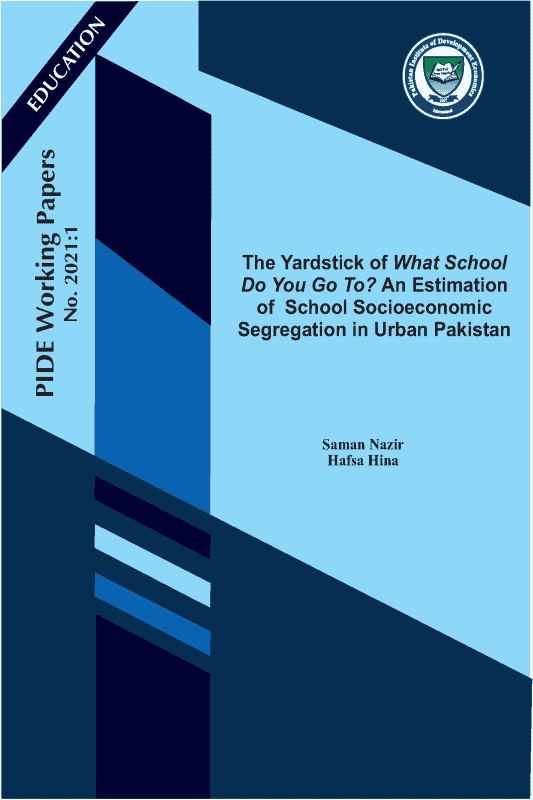The Yardstick of What School Do You Go To? An Estimation of School Socioeconomic Segregation in Urban Pakistan
School socioeconomic de/segregation is a primary policy concern as it can foster or limit children’s opportunities in society. This study measures the magnitude of school socioeconomic segregation in Pakistan. By using the data from the 2001-02 and 2018-19 Pakistan Social and Living Standards Measurements (PSLM) surveys, we estimated the school segregation at national, urban, and city levels. Our study suggests high levels of segregation in the public school for students from disadvantaged socioeconomic backgrounds. Segregation in schools has significantly increased over the years. Public schools are more segregated than low-cost and high-cost private schools at the national, all urban, and city levels. However, the low-cost private school is significantly less segregated than public and high-cost private schools. Additionally, we found the highest socioeconomic segregation (grades 1–10) for Islamabad, followed by Multan, Gujranwala, and Faisalabad.




